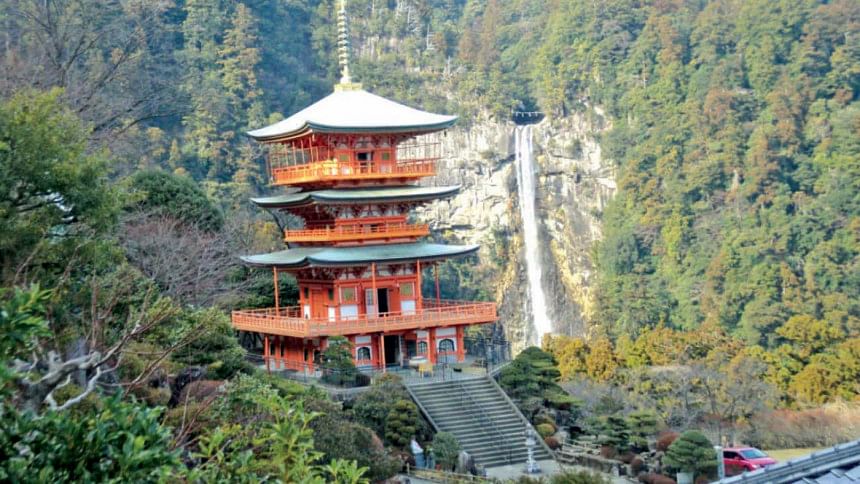Land of the rising sun

IT'S hard enough for the uninitiated to throw a dart, what more a shuriken (four-pronged metal star), at a dartboard. And sure enough, the journalist along with me on the trip not only missed the target, but the entire board it was on, with three throws. Our translator fared better, hitting the target at least once.
It was always obvious that Japan has a firm grip on popular culture, but the Land of the Rising Sun also has marvellous sights, associated with the country's rich history.
The trip for us really began in the Wakayama prefecture of the Kansai region, south of Honshu island, when we were whisked to the Wakayama castle, a majestic structure decimated by American bombers on July 9, 1945, and rebuilt in 1958.
It was here in the castle's surroundings — framed by the beautiful Momijidani Teien Garden — that we got our first "taste" of Japan, courtesy of the 64-year-old tea lady at the Koshoan Teahouse. A process ritualistic in nature that is not merely about downing the freshly brewed warm green liquid, tea serving is also about appreciating the intricate designs of the bowls it's served in.
For those of a fishy persuasion, the Wakayama Marina City is a worthy pit stop. The daily highlight here is the tuna filleting show. At the Kuroshio Ichiba market area, a 60kg-odd tuna was expertly carved open before our eyes by the fish butcher. And as special guests, we were treated to the prime cut — the fish's cheek in a mouth-watering serving of sashimi.

With Hello Kitty inextricably etched into popular culture, it's no surprise that the Japanese love their cats. But Nitama isn't the only celebrity feline on the Kishigawa Line. Over at the Kishi station, which is serviced by the three themed trains—Omocha (toy), Ichigo, a homage to the strawberry plantations in the nearby Kinki district (strawberry) and Tama, one can find Ultra stationmaster Tama, who has served as a symbol of the revitalisation of the Kishigawa Line and appointed deputy president at the company. She is also a Calico cat and Nitama's boss.
Granted, viewing the ocean or a coastline in winter isn't ideal, but the view of the Sandanbeki rock cliff and cave, Senjojiki rock plateau and Engetsuto—island of Shirahama, is simply breathtaking. The Japanese believe that anything that possesses superhuman powers is divine, hence why mountains, waterfalls and trees are all appreciated and respected. It's this premise that inspires the worship of the Kumano Nachi Taisha Grand Shrine, Nachisan Seiganto-ji Temple and the glorious Nachi Waterfall, all of which begin from the Daimon-zaka slope.
My favourite place of interest, however, was the Ninja Museum of Igaryu in Iga, the birthplace of the art of ninja, ninjitsu.
Contrary to popular belief, they were not all action warriors waiting to accost victims and riddle them with shurikens. In fact, ninjas were mercenaries (most likely regular farmers in the day) who carried out intelligence work, and were well-versed in medicine, botany and gunpowder.
We reached Osaka on our second last night and were treated to a mind-blowing visual spectacle of the 3D Projection Mapping show at the Osaka castle amid a kaleidoscope of lights.
Japan is a nation very much rooted in history, but it is also steeped in myths and legends, weaving a rich heritage of culture and arts into the fabric of its society. The people are the most civic-conscious you could meet and the food a gastronomic delight.
By N. Rama Lohan in Kansai/The Star
Copyright ANN
Photo: ANN

 For all latest news, follow The Daily Star's Google News channel.
For all latest news, follow The Daily Star's Google News channel. 



Comments